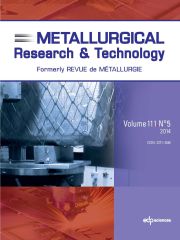Article contents
Machinability of duplex stainless steels long products: how todeal with the sulphur way?
Published online by Cambridge University Press: 01 December 2011
Abstract
Duplex stainless steels are known to have a good resistance to localised corrosion,especially thanks to their quiet high level of chromium (and for some of them molybdenum),but also because of their very low level of sulphur. These very low levels of sulphur arealso useful to guaranty a good toughness and a good hot workability for these grades.Concerning long products like bars made in Duplex Stainless steels, one of their mostimportant property, after corrosion resistance, is their machinability. Unfortunately, oneof the most known way to improve the machinability of stainless steels is to increasetheir sulphur level, thus forming manganese sulphides in the stainless steels which inducebetter chip breaking and lubrication at the chip – cutting tool interface. So the questionis: can the sulphur well-known way to improve machinability of stainless steels be used onDuplex Stainless Steels, without inducing hot rolling difficulties and too important adecrease of their other main properties, i.e. localised corrosion resistance andtoughness? If not, are other ways possible?
Keywords
- Type
- Research Article
- Information
- Copyright
- © EDP Sciences, 2011
References
- 5
- Cited by


